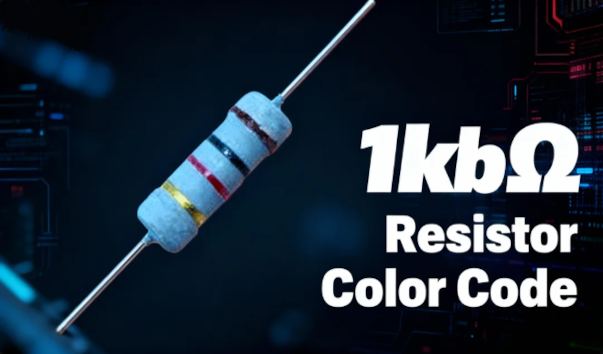Heavy Duty Connectors
Heavy Duty Connectors are robust electrical or mechanical devices designed to establish secure and reliable connections in demanding environments. They are essential for various industries, including automotive, , construction, and industrial machinery, where durability and performance are paramount.
Definition:
Heavy Duty Connectors are specialized connectors engineered to withstand harsh conditions such as extreme temperatures, vibrations, moisture, and physical stress. They are built with high-quality materials and often feature reinforced housings to ensure longevity and stability.
Functions:
1. Reliable Connection: They provide a consistent and secure connection between electrical systems or components.
2. Protection: They shield internal components from environmental factors like dust, water, and corrosive substances.
3. Ease of Use: Many heavy-duty connectors are designed for quick and easy installation and removal, even in tight spaces.
4. Safety: They often include safety features like locking mechanisms to prevent accidental disconnection.
Applications:
1. Automotive: Used in vehicles for power distribution, lighting, and engine control systems.
2. : Employed in for critical systems due to their ability to withstand high altitudes and vibrations.
3. Industrial Machinery: Found in heavy equipment for power and control circuits that require high durability.
4. Construction: Used in heavy machinery for reliable power and data transmission in rugged conditions.
Selection Criteria:
1. Environment: Choose connectors rated for the specific environmental conditions they will face.
2. Current Rating: Ensure the connector can handle the electrical current required by the application.
3. Vibration Resistance: For applications with high vibration, look for connectors designed to resist these forces.
4. Sealing and Protection: Connectors should have appropriate IP ratings to protect against dust, water, and other contaminants.
5. Ease of Installation: Consider the ease of connecting and disconnecting the connector, especially in confined spaces.
6. Compatibility: Ensure the connector is compatible with the equipment and systems it will be used with.
7. Certifications: Look for connectors that meet industry standards and certifications for safety and performance.
In summary, heavy duty connectors are critical components in systems that require robust and reliable connections. Their selection should be based on the specific demands of the application, including environmental factors, electrical requirements, and ease of use.
Please refer to the product rule book for details.
Definition:
Heavy Duty Connectors are specialized connectors engineered to withstand harsh conditions such as extreme temperatures, vibrations, moisture, and physical stress. They are built with high-quality materials and often feature reinforced housings to ensure longevity and stability.
Functions:
1. Reliable Connection: They provide a consistent and secure connection between electrical systems or components.
2. Protection: They shield internal components from environmental factors like dust, water, and corrosive substances.
3. Ease of Use: Many heavy-duty connectors are designed for quick and easy installation and removal, even in tight spaces.
4. Safety: They often include safety features like locking mechanisms to prevent accidental disconnection.
Applications:
1. Automotive: Used in vehicles for power distribution, lighting, and engine control systems.
2. : Employed in for critical systems due to their ability to withstand high altitudes and vibrations.
3. Industrial Machinery: Found in heavy equipment for power and control circuits that require high durability.
4. Construction: Used in heavy machinery for reliable power and data transmission in rugged conditions.
Selection Criteria:
1. Environment: Choose connectors rated for the specific environmental conditions they will face.
2. Current Rating: Ensure the connector can handle the electrical current required by the application.
3. Vibration Resistance: For applications with high vibration, look for connectors designed to resist these forces.
4. Sealing and Protection: Connectors should have appropriate IP ratings to protect against dust, water, and other contaminants.
5. Ease of Installation: Consider the ease of connecting and disconnecting the connector, especially in confined spaces.
6. Compatibility: Ensure the connector is compatible with the equipment and systems it will be used with.
7. Certifications: Look for connectors that meet industry standards and certifications for safety and performance.
In summary, heavy duty connectors are critical components in systems that require robust and reliable connections. Their selection should be based on the specific demands of the application, including environmental factors, electrical requirements, and ease of use.
Please refer to the product rule book for details.
Categories
Datasheets
Article

Nanofarad Capacitors: Basics and Applications
Table of Contents + 1.What Is a Nanofarad Capacitor (nF)? 1.1.Definition of nF 1.2.Capacitance Unit Hierarchy (pF → nF → µF) 1.3.What Is a Nano Capacitor? 1.4.Why are nF values commonly used in circuits? 2.nF, µF, pF Conversion Guide 2.1.What is 1 nF equal to? 2.2.Is 100 nF equal to...
Learn More >
Complete Button Cell Sizes and Compatibility Guide
Table of Contents + 1.Understanding Button Cells: Definition and Core Principles2.Mastering Button Cell Naming Conventions and Sizing Standards 2.1.The IEC 60086-3 Standard: The Rosetta Stone of Button Cell Naming 2.2.Essential Button Cell Size Chart: IEC Cross-Reference3.Major Button Cell Chemistries: Performance and Application Comparison 3.1.Lithium Batteries (CR/BR/LIR): The 3V Standard and Discharge Prof...
Learn More >

1kΩ Resistor Color Code: Bands, Selection & App
Table of Contents + 1. What is a 1kΩ Resistor? 1.1. Resistance Value Definition and Identification 1.2. What the “1kΩ” Value Means in Circuits 1.2.1. Limit current to protect sensitive components (LEDs / sensors) 1.2.2. Forming a Voltage Divider to Obtain Precise Intermediate Voltage 1.2.3. Impedance Ma...
Learn More >























